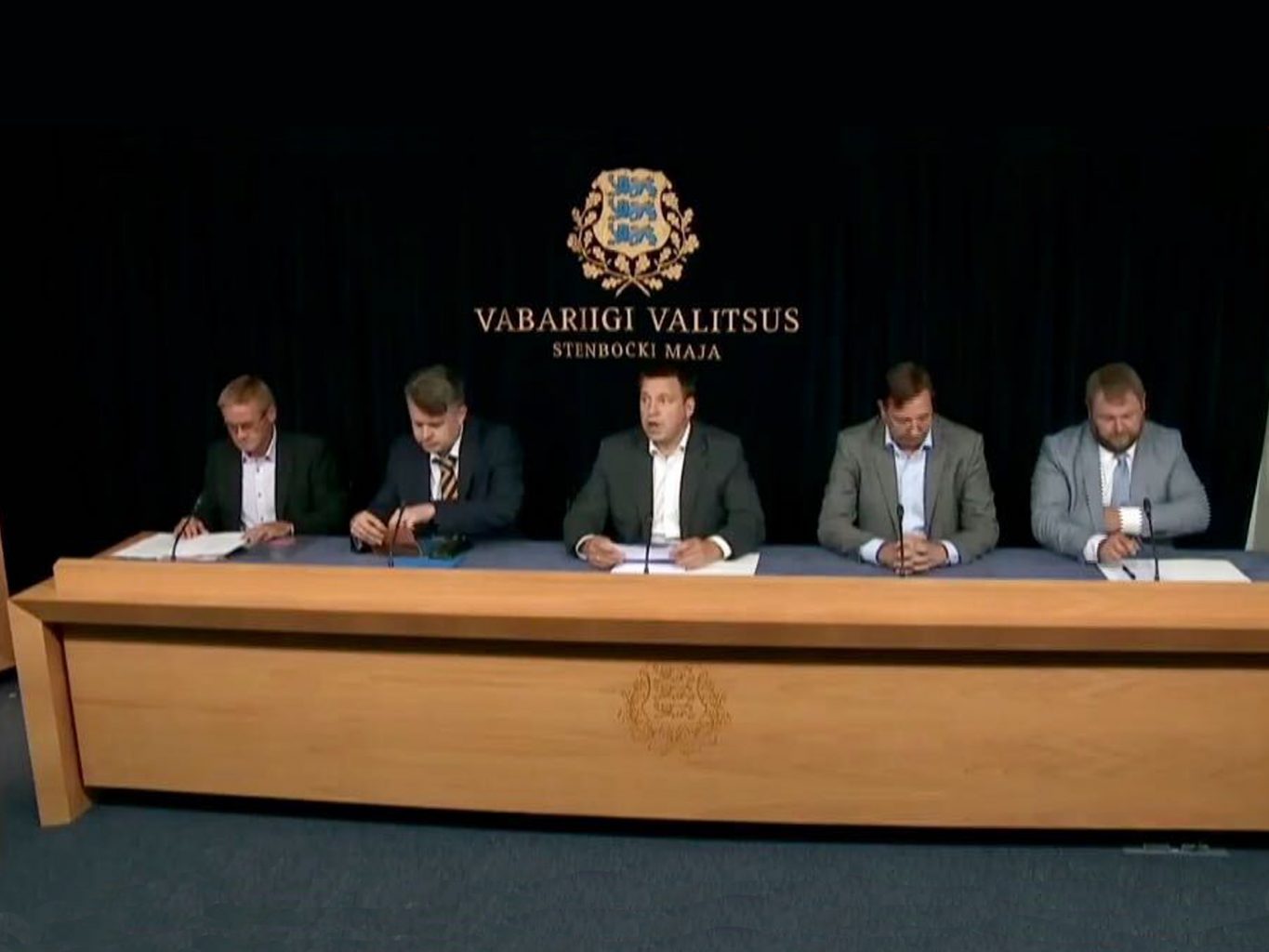The total cost of the development of Porto Franco is close to 200 MEUR, to which the shareholders have contributed with more than 100 MEUR. 102 MEUR will be borrowed as a syndicated loan, with the European Bank for Reconstruction and Development (EBRD) as the main lending partner and Luminor Bank as the local lending partner. With today’s government decision, KredEx will bridge finance the development of Porto Franco to open the EBRD bank loan.
Porto Franco is the largest development project in Estonia ever, with a total area of 150,000 m2. The loan agreement between Porto Franco and the banks was signed on February 28. The 102 MEUR syndicated loan from the EBRD and Luminor Bank is the largest loan ever directed to a real estate development in the Baltics.
“At the end of February, we signed a syndicated loan agreement with EBRD and Luminor Bank for a loan of 102 MEUR, but before the loan was opened, the pandemic overtook the economy. That is the reason for why the EBRD wants to mitigate the risks of economic slowdown caused by the corona crisis and considers it important that Porto Franco shareholders contribute more funds in the early stages of construction than previously agreed. In order to open the EBRD loan, we will receive a loan from KredEx and it in turn will satisfy the EBRD to ensure that the already signed bank loan enters the Estonian economy as soon as possible,” explained Rauno Teder, Chairman of the Management Board of Porto Franco OÜ.
“On behalf of the builders, tenants and shareholders of Porto Franco, I would like to take this opportunity to thank the entire Estonian Government for the trust expressed in extending the state’s KredEx bridge loan to complete the most expensive construction that the Republic of Estonia has seen. “Teder said. “In particular, on behalf of Porto Franco, I would like to encourage KredEx’s Management Board and Supervisory Board and the people in the Ministry of Economic Affairs and Communications and the Ministry of Finance, who did their best to help ease the burden on the construction sector when the crisis measures were formed, to continue to think outside of the box.”
Teder added that belonging to a young generation of entrepreneurs, he has only heard legends about the previous crisis when you would walk into the Ministry of Economic Affairs as a complete stranger, with a map in your hands, tell your story and walk out of there with up to hundreds of millions of Estonian kroon worth of KredEx sureties. “And the state did not suffer any harm from it,” Teder stressed.
“For me, this is the first crisis, but I am been very impressed by the helpfulness and willingness of our country’s authorities to come at a difficult time and ask what the authorities can do, how they can lend a helping hand during this crisis,” Teder said. “However, it is understandable that the state can support an entrepreneur only temporarily and in real life entrepreneurs uphold the state by paying their taxes.”
Teder added that the KredEx loan is not an ordinary loan or guarantee, it is a bridge loan, which means that all amounts requested from Kredex will be used as a bridge loan before the bank loan is opened and will be repaid after the construction permit is received. The means to do so are provided for in the agreement with the EBRD. “It is important for both us and the decisionmakers that 102 MEUR are going to be invested in Estonia, because according to the calculations of the Ministry of Economic Affairs and Communications, the state budget will receive an additional of 23.5 MEUR from it,” said Teder.
Estonian subcontractors are used in the construction process of Porto Franco. Termination of employment of already signed contracts with foreign employees and conclusion of new domestic contracts requires good cooperation with the banks who finance the construction. During the COVID-19 crisis, Porto Franco has replaced all foreign contractors with Estonian contractors – today all old construction and supply contracts have been terminated. “In order to place orders with local manufacturers, we also replaced the facade and glass suppliers with Estonian ones. This way, we will create 400-500 new jobs for the local workforce in the construction sector, which is entering the crisis, and employ 150-200 workers in Estonian factories, “said Teder.
Porto Franco’s shareholder is a long-term partner of EBRD and KredEx since 2007 and has collaborated on projects worth 250 MEUR. Cooperation with KredEx and EBRD is strategic in the eastern development of Estonian construction exports and will continue in the coming years.
Porto Franco is a unique real estate development that opens Tallinn’s city center to the sea, being the only business and leisure area by the sea in the capital. 200 MEUR will be invested in the development of Porto Franco, and the new multifunctional city block will have an area of more than 150,000 m2. The Porto Franco complex consists of three underground floors with 1,170 parking spaces and commercial rental spaces, and five above-ground floors for a shopping center, office center and hotel. In addition, Porto Franco will become a home for cafes and restaurants, a hotel, a hypermarket and various companies, shops as well as office spaces. The first building that was completed recently is the modern Citybox Tallinn Hotel, which will open its doors to the public on August 1, 2020.

